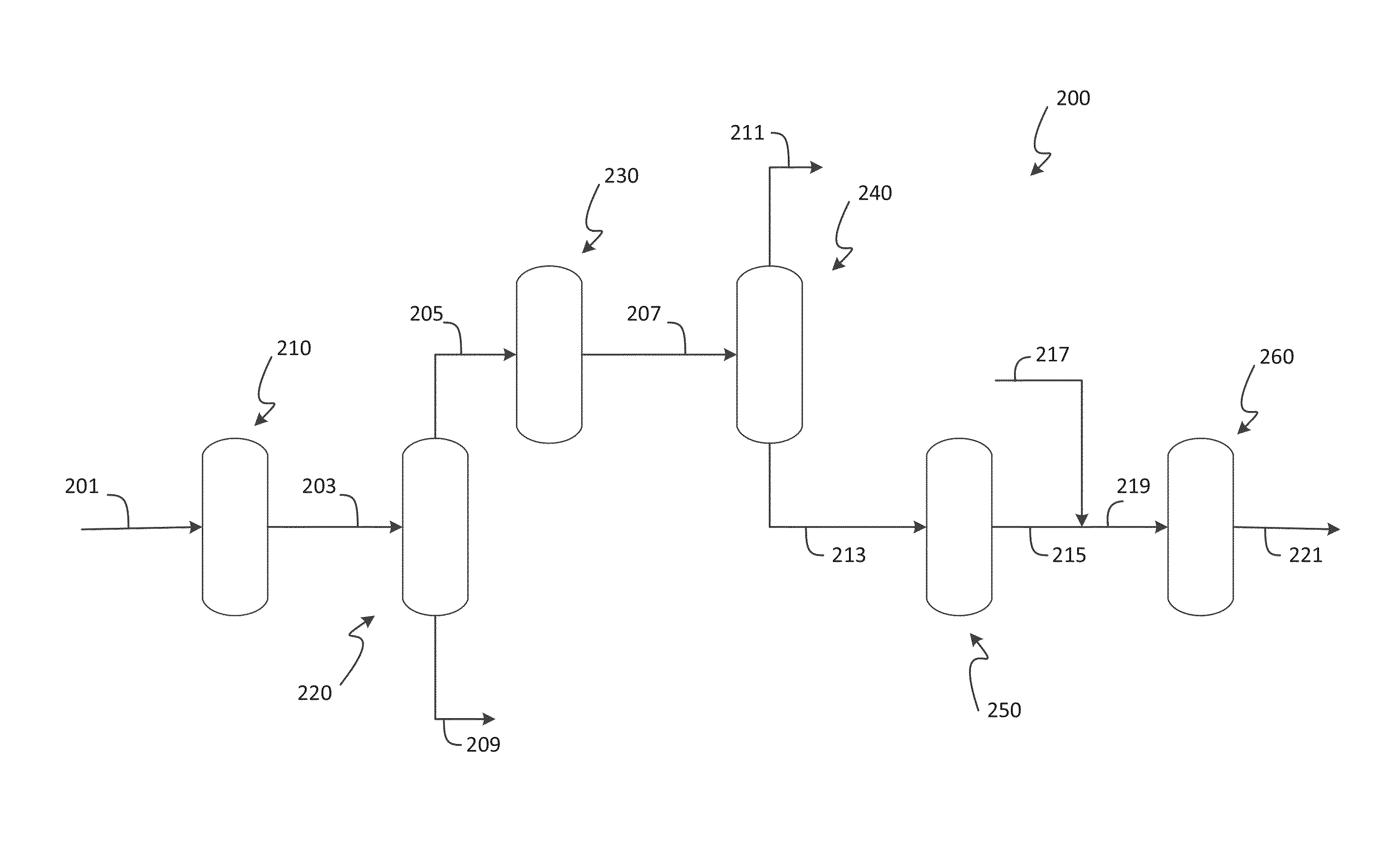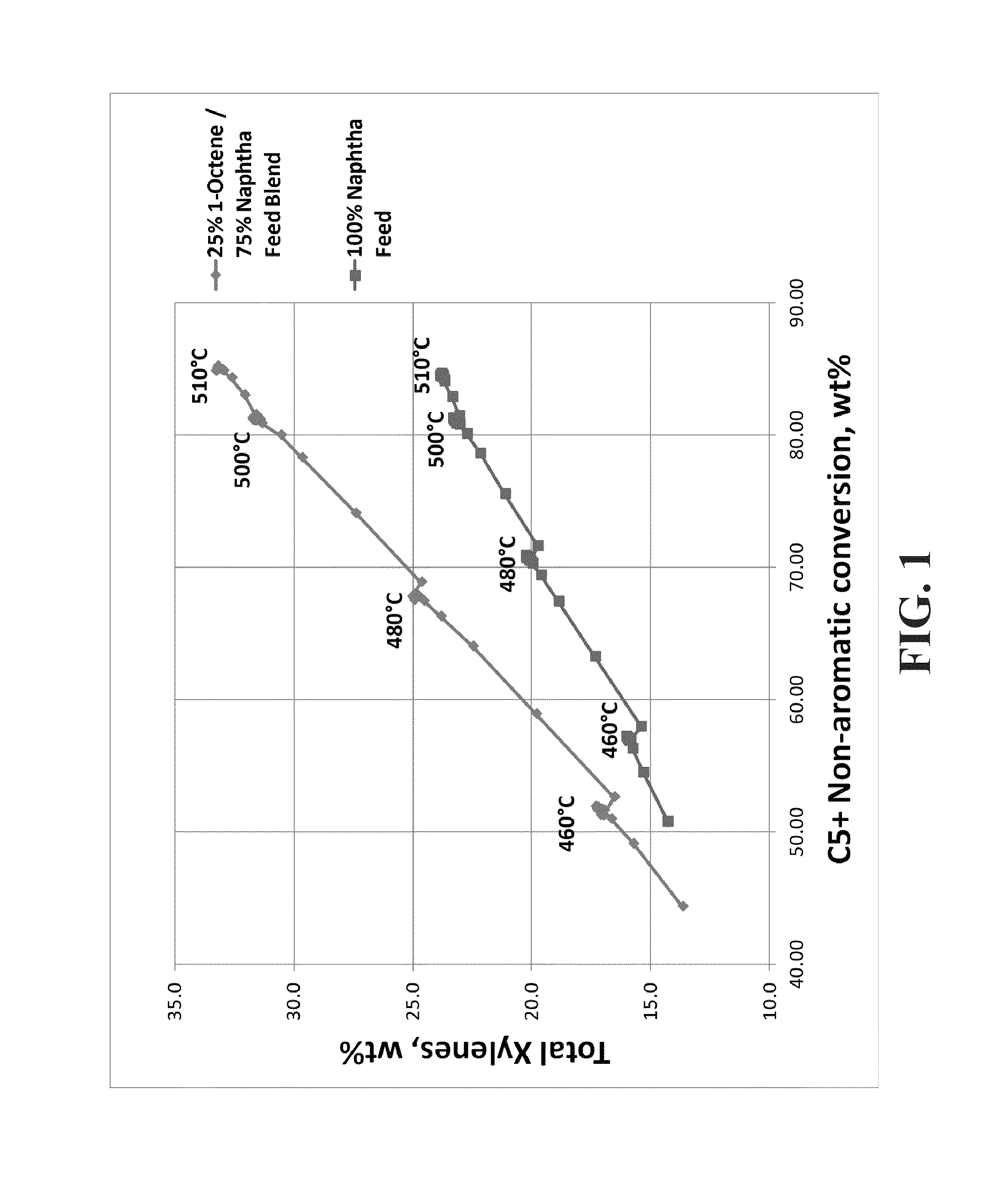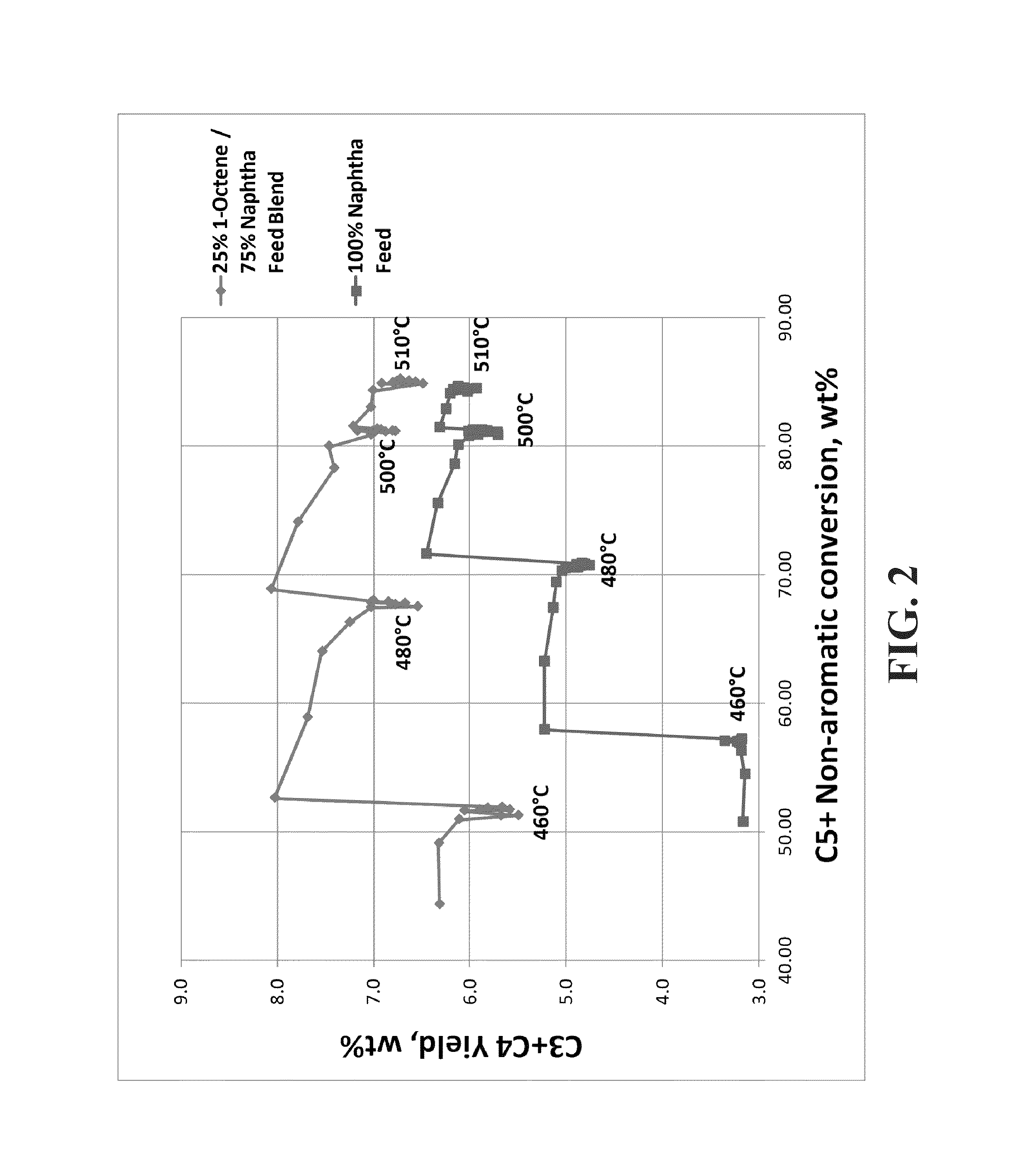Process for xylenes production
a xylene and process technology, applied in the field of high temperature reforming process, can solve the problems of large amount of non-aromatic content remaining in the reformed naphtha, large amount of subsequent processing of non-aromatic content, and reduced selectivity, so as to improve reduce the acid cracking of c8 hydrocarbons, and increase the yield of xylen
- Summary
- Abstract
- Description
- Claims
- Application Information
AI Technical Summary
Benefits of technology
Problems solved by technology
Method used
Image
Examples
example 1
[0051]A feed blend was made using 25% 1-octene (100% linear C8) and 75% naphtha (61.2 wt % paraffins, 30.6 wt % naphthenes, 8.2 wt % aromatics, 329° F. end point by ASTM D86 distillation). The blend was fed to a reforming pilot plant operating at a liquid hourly space velocity (LHSV) of 1.0 hr−1, a molar ratio of hydrogen to hydrocarbon (H2:HC) of 6:1, 50 psi (gauge), with 12 hour temperature holds at 460° C., 480° C., 500° C., and 510° C. A 100% naphtha feed was also run separately over the same catalyst as a comparison case. The catalyst was a high-yield reference catalyst (RC1), which is a lanthanide containing spherical alumina catalyst with 0.30 wt % Sn, 0.29 wt % Pt, 1 wt % Cl and 0 wppm K. FIG. 1 shows that the C8+ naphtha blend produced significantly more xylenes than the naphtha alone. Furthermore, as the conversion increased as a function of increasing temperature, the amount of xylene produced increased for both feeds but there was a larger increase in xylenes for the C8+...
example 2
[0053]A performance evaluation was made using process simulation models to compare the material balance over the reforming unit when naphtha was the reformer feedstock and then when naphtha was mixed with a C8 olefinic stream, the second bottoms stream discussed above, comprising about 18 wt. % normal C8 olefin, 55 wt. % mono-branched C8 olefin, and 25 wt. % di-branched hydrocarbons, with only about 2 wt % tri-branched hydrocarbons. The operating conditions of the reforming unit included a liquid hourly space velocity (LHSV) of 2.30 hr−1, a molar ratio of hydrogen to hydrocarbon (H2:HC) of 2.8:1, and 50 psi (gauge). The catalyst in the simulation was a reforming catalyst containing Pt, Sn, and Cl on an alumina support. Table 1 shows that the mixed feed of C8 olefinic feed and naphtha blend produced significantly more xylenes than the naphtha alone, approximately 3 wt % more.
[0054]
TABLE 1Naphtha Only feedMixed FeedNaphtha feed to Reformer, lb / hr386,984386,984C8 Olefinic feed to Refor...
example 3
[0055]A series of spherical alumina catalysts was prepared, which contained 0.30 wt % Sn and a range of K between 0 and 2000 wppm. The catalysts also contained 0.29 wt % Pt and about 1 wt % Cl. 100% naphtha was used to pilot plant test the catalysts at 50 psi (gauge), a liquid hourly space velocity (LHSV) of 1.4 hr−1, a molar ratio of hydrogen to hydrocarbon (H2:HC) of 3:1, 8 barrels feed per ft3 catalyst (BPCF) and a research octane number of 104.3 as determined by gas chromatography. The data was adjusted with a kinetic model to a constant 80% conversion of C7 paraffins to show the yield selectivities at a constant conversion level. In addition to RC1, a second reference catalyst (RC2) was tested. RC2 is a lanthanide-free, spherical alumina catalyst with 0.30 wt % Sn, 0.29 wt % Pt, 1 wt % Cl and 0 wppm K.
[0056]FIG. 3 demonstrates that K-containing samples produced more xylenes than Catalysts A and B that do not contain K. Catalyst A was a high-yield reference catalyst, which is a ...
PUM
| Property | Measurement | Unit |
|---|---|---|
| temperature | aaaaa | aaaaa |
| temperature | aaaaa | aaaaa |
| temperature | aaaaa | aaaaa |
Abstract
Description
Claims
Application Information
 Login to View More
Login to View More - R&D
- Intellectual Property
- Life Sciences
- Materials
- Tech Scout
- Unparalleled Data Quality
- Higher Quality Content
- 60% Fewer Hallucinations
Browse by: Latest US Patents, China's latest patents, Technical Efficacy Thesaurus, Application Domain, Technology Topic, Popular Technical Reports.
© 2025 PatSnap. All rights reserved.Legal|Privacy policy|Modern Slavery Act Transparency Statement|Sitemap|About US| Contact US: help@patsnap.com



